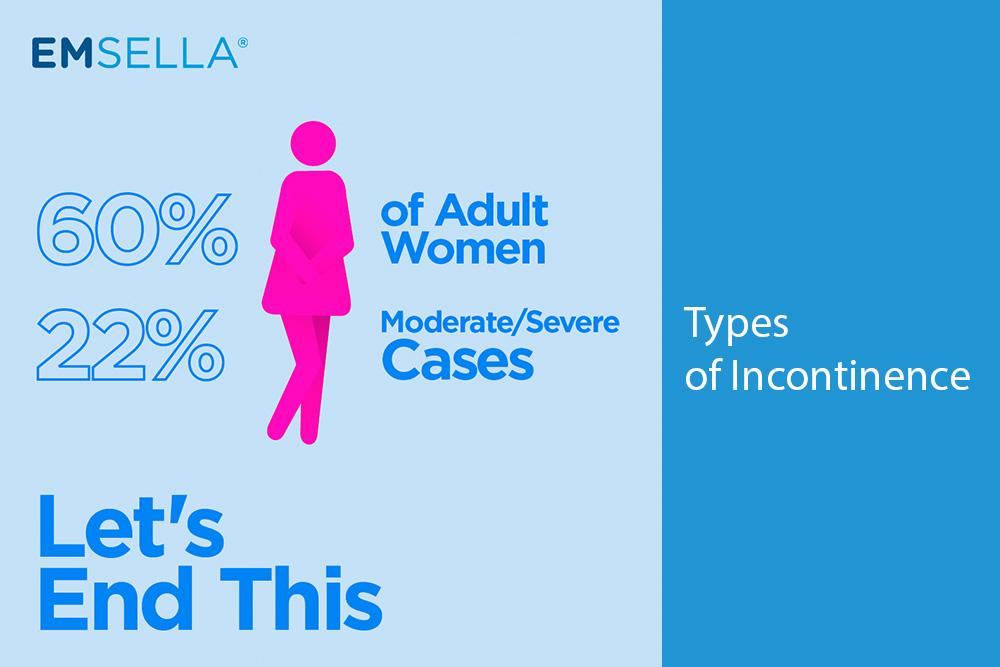
Emsella is a noninvasive, nonsurgical treatment option showing promising results for incontinence and sexual dysfunction for women and men of all ages. It can also help prevent uterine prolapse in women. The breakthrough FDA-cleared electromagnetic therapy offers people suffering from bladder control, as well as sexual issues, a more natural and less invasive solution than prescription medications and surgery. The electromagnetic treatments stimulate the pelvic floor muscles to simulate performing Kegel exercises. The therapy has become so popular there are Emsella treatment providers located in most major cities across the U.S. However, there is some misinformation about the treatment. So, before performing an online search for Emsella near me, there are some things you need to know about the treatment and its efficacy.
Incontinence and its Causes
In many cases, incontinence is linked to pregnancy, childbirth, and a postmenopausal hormone imbalance in women and BPH, or benign prostate enlargement, in men. Incontinence is also linked to simple aging in both men and women, where the underlying cause is typically weakened pelvic floor muscles caused by the natural aging process.
The National Institute of Health reports that incontinence affects over half of all women over 40 and can become more severe as women age. While men see about half the incident rate of incontinence as women, up to about 17 percent, this is typically attributed to prostate surgery, physical trauma, or a neurological issue. Incontinence in both women and men increases with age, but severe incontinence is much more prevalent in older women than in men.
According to the New York Times, “The pelvic floor muscles may be the most important muscles you never target with a workout. Like a trampoline that sits at the base of your pelvis, these muscles not only contribute to overall core strength, they also hold multiple organs in place — including the bladder, bowel and, for some, the vagina and uterus — ensuring they work properly.” And yet, many people don’t even know the pelvic muscles exist, said Dr. Amy Park, the head of female pelvic medicine at the Cleveland Clinic — at least, not until they stop working properly. “There’s a general lack of awareness about the pelvic area,” said Dr. Park.

Types of Incontinence
Over 20 million American men and women are estimated to suffer from some form of incontinence. While the root causes can vary, most forms of incontinence can be treated by strengthening the pelvic floor muscles. The main types of incontinence include:
- Urgency Incontinence occurs with an almost uncontrollable urge to urinate, often resulting in bladder leakage in the form of minor dribbling to more severe episodes.
- Stress Incontinence happens when the pelvic floor muscles that control the urinary sphincter are weakened, and leakage can occur during a stressful physical event such as coughing, sneezing, or lifting a heavy object. Stress incontinence is typically attributed to surgery or some sort of physical trauma.
- Functional Incontinence is usually associated with a physical impairment and presents with a sudden, uncontrollable urge to urinate and can often cause leakage during normal daily activities. Overflow incontinence is typically found in men with BPH or other related issues where the bladder cannot reach its full volume.
What does incontinence have to do with stress? If you have to ask, then count yourself fortunate. Did you know that:
- 23% Up to 23% of women take time off work because of their incontinence.
- Women with severe urinary incontinence pay $900 annually for incontinence routine care.
- 54% of women with undiagnosed incontinence report loss of confidence with 45% reporting a loss of intimacy.
- Between 25–50% of women with urinary incontinence experience sexual dysfunction.
- More than a third of women between 45 and 50 avoid athletic activities out of fear of an incontinence episode.
Sexual Dysfunction
Weakened pelvic floor muscles in women are very often associated with significantly reduced sexual interest, reduced ability to achieve orgasm, and dyspareunia, which is characterized by genital pain during or after intercourse. Weakened pelvic floor muscles in men can result in the inability to achieve or maintain an erection and can also result in premature ejaculation.
Uterine Prolapse
Uterine prolapse occurs when the pelvic floor muscles and the supporting ligaments become weakened from stretching during childbirth, resulting in the tissues no longer being strong enough to support the uterus. This results in the uterus slipping into the vagina and can drop far enough so it protrudes out of the vaginal canal. Uterine prolapse typically occurs in women after they have reached menopause and who have given birth multiple times through vaginal delivery.
Kegel Exercises and the Pelvic Floor Muscles
Your pelvic floor is made up of a group of 14 intricately woven muscles and connective support tissues that help hold the pelvis, bladder, bowels, and reproductive organs in place. These muscles aid in stabilizing the body’s core, or midsection, and are also used to control bladder and sexual functions.
Dr. Arnold Henry Kegel, a gynecologist, invented Kegel exercises as a nonsurgical option for treating urinary incontinence resulting from muscle weakness. As with all muscles, the pelvic floor group can atrophy over time from injury or just lack of use, and performing Kegels strengthen the muscles and can help return control of the bladder. Emsella urinary incontinence therapy employs high-intensity focused electromagnetic, or HIFEM, pulses to strengthen the pelvic floor muscles by simulating Kegel exercises.
The pelvic floor is a muscle. Imagine doing a workout to build the muscle strength needed to no longer have incontinence? Women are told to just do Kegel’s but many do not have the muscle control to do such exercises.

Emsella Treatment
Emsella stands for electromagnetic, where “em” is an abbreviation for electromagnetic and “sella” is Latin for “chair.” Treatment simply involves sitting in the specially designed chair for 22 minutes, during which time the chair emits short HIFEM pulse waves that create continual supramaximal contractions throughout the pelvic floor muscles. During the treatment session, you will hear the chair emitting a low-intensity humming sound, and you will feel a slight tingling sensation and experience your pelvic muscles contracting. The treatment is a safe and effective, long-term solution. It is superior to performing actual Kegel exercises as it would take several days of continually performing them to receive the same benefit as one 28-minute Emsella therapy session, equivalent to performing 11,000 Kegel contractions!
Overall, over 95 percent of people who have used Emsella treatment for incontinence and sexual dysfunction issues have experienced improvement to some degree. For optimum benefit, a session should be conducted twice weekly for three weeks. Then an occasional maintenance session after the initial course of treatment is completed to main muscle tone. Some people will realize immediate results, while others may notice little if any, difference once they have completed multiple sessions. It can require some people to undergo more sessions than others before they notice improvement.
Erectile Dysfunction and Premature Ejaculation
Erectile dysfunction affects men of all ages for different reasons, such as nerve damage and taking some medications. Kegel exercises can help to improve erectile dysfunction by strengthening the pelvic floor muscles that are needed to achieve and maintain an erection. One of the main causes of erectile dysfunction is reduced blood flow. Strengthening the pelvic floor muscles can help to improve circulation to the region, and increasing circulation can also help with the healing of damaged nerves. The strengthening of the pelvic floor muscles and improved nerve function can also help men learn to delay ejaculation.

Improved Sexual Function for Women
Weakened pelvic floor muscles in women can result in dyspareunia and a reduced ability to reach orgasm. Strengthening the pelvic floor muscles can help improve a woman’s ability to achieve orgasm, increase sexual desire, and improve nerve function can help reduce dyspareunia.

A lack of control over urinary incontinence and sexual dysfunction often causes people to avoid seeking medical treatment due to fear, shame, and doubt. However, both women and men find Emsella treatment an effective urinary incontinence therapy option and sexual dysfunction treatment. If you have been struggling with either condition, Be Still Float wellness studio offers a host of wellness treatments, including pelvic floor therapy in Jacksonville, Florida. Visit them online at BeStillFloat.com for more information on Emsella, or call them at 904.593.2458 to schedule a consultation or make an appointment. Our wellness studio studio started out focusing on float therapy but we offer a variety of alternative services that help relieve stress, anxiety or pain without interventions and zero downtime. Check out what our clients have to say about our services! If you live outside the Jacksonville area, you can find a treatment center in your town by performing an online search for “Emsella near me.”












